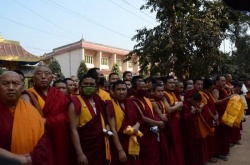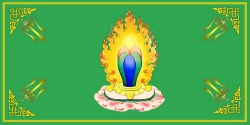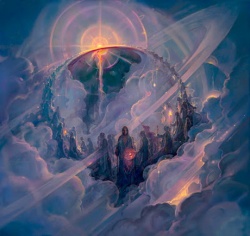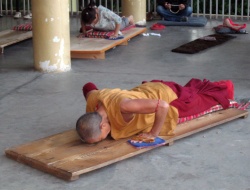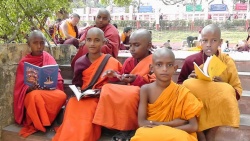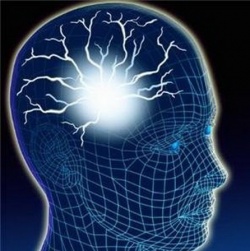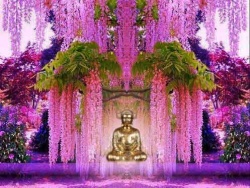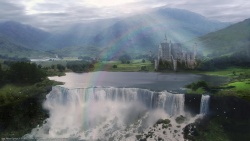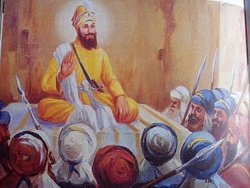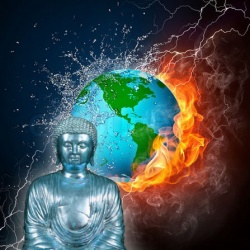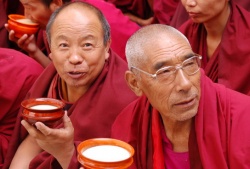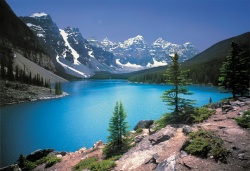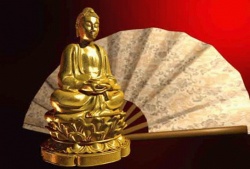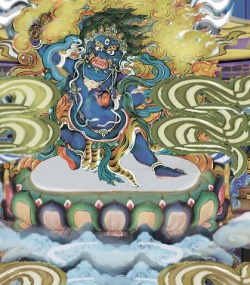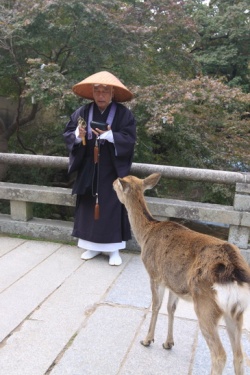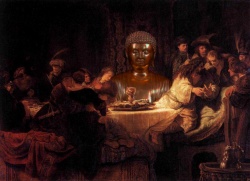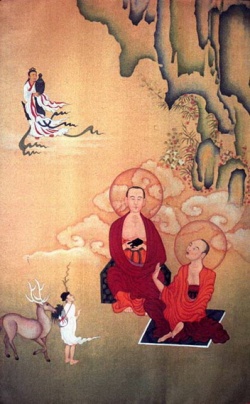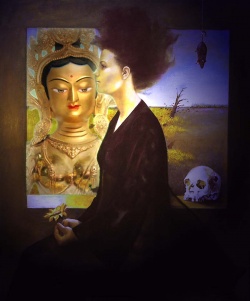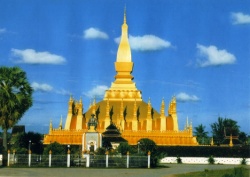Samadhi-yoga
"Salutation to the Siva, who is in the form of power of all science, the Nada and Bindu. Any one devoted to these will obtain the state which is above the Maya,"
Samadhi is many stages, but any Samadhi can destroy the enemy death, and bring one to the Divine State of Supreme Bliss.
When the Prana (Vital or Life Force) and mind are controlled, a state of harmony arises—that is Samadhi. As salt thrown in water becomes one with the water, so the controlled mind becomes one with Atma—that is Samadhi.
"Those who really understand the greatness of Yoga, and obtain it thru practice, and by the help of a kind Guru, are emancipated.
"Understanding of Wisdom, and directly realizing the one Atma as Parabrahma (Universal Soul) is emancipation, and it gives power over all of Nature's forces—known as Siddhis and Anima."
"Without the help of a Spiritual teacher, and without sincere effort of the student, the real realization of Truth, and the state of Samadhi cannot be attained by the student."
"When a Yogi has awakened the Kundalini (Mother God) by practicing the Mudras, then Prana moves thru the Sushumna, and having aroused all the Chakras, the Yogi arises above all Karma, and is then freed from cause and effect;—that state is Samadhi.
"The mind is the cause of Karma; when the mind and Prana (its moving power) is controlled by daily practice of Mudras. then the lower mental activity ceases.
The higher self then manifests. Yogi attains the unchanging state.
He is master over time, matter and space;—that state is Samadhi. When the mind is poised, the Prana moves in the Sushumna, and real realization is obtained.
Why should one fear death, as they are above decay and death? No one can attain wisdom as long as the Prana and mind are not controlled.
He who controls the Prana and mind attain liberation.
"Many say liberation can be only attained by Wisdom;
then what is the use of Yoga?" The Siva answered: "A battle is won by a sword; but what is the use of a sword without a warrior and valor? So both are needed."
"Those great men and women have attained pure wisdom and liberation have not practiced Yoga, have they?" "They have practiced Yoga in their past lives."
I will drop this matter here as I do not want to prove or spend any time on the past. My object is to show how to awaken the Kundalini and reach the blessed state of Samadhi.
The human body has a great number of Nadis, the three main ones,—Ida and Pin-gala on each side of the spine, the Sushumna in the middle. The Prana moves thru the Ida and Pingala only; the Sushumna being closed.
When Yogi learns the secret of controlling the Prana and Apana, then he can awaken the Kundalini, and force the Prana to go thru the Sushumna.
When this has been accomplished—Samadhi follows. All other means are waste of time. Thus Yogi should not follow other means if he desires to awaken the Kundalini and reach Samadhi.
The mind is made to move by two things, the Prana and desire. If Prana is controlled, desire is also controlled.
Therefore, the Prana and mind are as one. As long as the mind is not mastered, so long the senses are not mastered.
When the three are controlled, then the Yoga can hold them on any Chakra, and awaken or move the Kundalini.
By control of the Prana and mind the Yogi gains strength; by this strength he arises above all diseases. So Yogi should practice Pranayama and the Mudras to master Prana.
The mind is the master of the organs of sense, the Prana is the master of the mind. When the Prana and the mind are under control the Yogi attains blessed peace, which can only be known by experience.
The lower mind is ignorance itself. When the mind is controlled, ignorance, which is the Mother of Maya (illusion), dies. The Yogi attains Samadhi or the state of Brahma.
Every one wishes to attain the Laya Yoga, but it is difficult to attain. To do so the Shambhavi Mudra is the best to practice.
This Mudra cannot be attained until the Prana and the mind are controlled; then Shambhavi Mudra should be practiced as it raises the Yogi above time, matter, space and ether.
He controls the power of nature's forces, as levitation and walking on water, and he can live as long as he desires. but this is not the object of the Hindu Yogis.
Their object is not to attain wonderful powers. but Seedless Samadhi—the Brahmic state—which is above all other states; it is divine peace and common to all.
When the Yogi succeeds in controlling Prana, from the Ida and Pingala Nadis, and makes it go thru the Sushumna, he has reached the state wherein he experiences Truth, which is the Light of Lights, and is the Source of All. This is the goal of all.
Yogis practice different Mudras to control Prana.
When Prana is controlled and made to move thru the Sushumna, the state of Samadhi follows.
This is the correct method When Yogi desires to cheat death and time, he raises the Prana up to the Ajna Chakra, placing the Prana and the mind in the Kundalini, then by steady meditation Yogi moves the Kundalini.
He then places the Atma in the Brahma and Brahma in the Atma. He is then in Samadhi—ALL in ALL.
The external worlds are created by the lower mind.
By controlling the lower mind, the external world is finished. Then meditating on the One Reality, the Yogi becomes that Reality or Brahma. He is not affected by matter, space or time. He is above all.
All things in the world are perceived by mind. When the mind is controlled there remains no duality. When the mind is merged
p. 77
in the Atma, that state is the Absolute, and is Satchitanada (truth, wisdom, bliss).
"Salutation to Sushumna, to the Kundalini, to the Stream of Nectar flowing from the Moon".
The Nada Practice:
The Great Yogin Garakhnath has given out the practice of Nada to help those who are unable to realize the pure truth.
The Yogi should sit in the Sidhasan and practice the Shambhavi Mudra, and should listen with fixed mind to the sound of the self, which will be heard in the right side of the head.
The sounds will be ten—from the ocean roar to a very subtle sound—but Yogi should keep the mind fixed on Nada which is the goal.
When the Yogi is sitting in Sidhasan practicing Shambhavi with Yoni Mudra, he should force the Prana to the heart center, as the sound begins there.
When Prana becomes one with the Nada, then the Yogi should move it to the Vishudha Chakra.
As soon as Yogi succeeds in taking the Nada with Prana to the Vishudha Chakra, he will become like Devas, and the Brahmanada (Divine Bliss) will surely follow.
From the Vishudha Chakra Yogi should forcibly take the Prana and the Nada to the Ajna Chakra. This is the source of all Sidhis. Reaching here the Yogi controls all the finer forces of nature and mental knowledge.
He arises above nature's elements and mind, and is one with Atma, above the world's miseries. His mind is listening to the inner sound of the Nada.—it is the blessed joy that can be known by one who has attained that state.
One state more remains for the Yogi; that is going up from the Ajna Chakra to the Sir Chakra or the Thousand Petal Lotus.
In Yogi will hear the sound of flutes. He has this Lotus, Yogi will hear the sound of flutes. He has then reached the highest state of Bliss. He is equal to God, as he can create and destroy any material thing, if he so wishes.
But creation and destruction are not the object of the Yogi; he wants to be liberated, and in this State he is liberation itself.
"Practice of Nada is most easy, even a feeble minded person can succeed by daily practice.
The practitioner will soon start to feel the joy that arises by the Nada in the heart. That joy cannot be explained by words as it is Divine Joy, above the reach of mental knowledge.
Sick and suffering humanity should practice Shambhavi, that they could hear the Nada sound, or the Inner Voice.
"Benefits to the students that practice Nada—as soon as their mind forms the habits of listening to the inner sound of the Nada, it will never be disturbed by external sounds.
By daily practice of Nada, the mind becomes firm and attracted by Nada,—it surely becomes one with Nada. As the sharp goad is best to control the mad elephant, so the Nada is best to control the mind.
The Nada holds the mind fixed, as a bird cannot fly without wings. Those Yogis who have mastered the Nada practice are never disturbed by any other sound; they are liberated and emancipated."—H. Y. Pradipika.
Yogi in Samadhi does not feel pain, thirst, hunger, heat or cold, nothing can harm him, his body does not decay, death never comes, near him. He is equal to God.
The Following is taken from The Yoga Aphorisms.—Chapter III—IV.
Translation and Commentary by
1. Dharana is holding the mind on to some particular object.
2—An unbroken flow of knowledge in that object is Dhyana.
3—When that, giving up all forms, reflects only the meaning, it is Samadhi.
4—(These) three (when practiced) in regard to one object is Samyama.
5—By the conquest of that comes light of knowledge.
When one has succeeded in making this Samyama, all powers come under his control.
This is the great instrument of the Yogi. The objects of knowledge are infinite, and they are divided into the gross, grosser, grossest, and the fine, finer, finest, and so on.
This Samyama should be first applied to gross things, and when you begin to get knowledge of this gross, slowly, by stages. it should be brought to finer things.
6—That should be employed in stages.
This is a note of warning not to attempt to go too fast.
15—The succession of changes is the cause of manifold evolution.
16—By making Samyama on the three sorts of changes comes the knowledge of past and future.
We must not lose sight of the first definition of Samyama. When the mind has attained to that state when
it identifies itself with the internal impression of the object, leaving the external, and when, by long practice, that is retained by the mind, and the mind can get into that state in a moment, that is Samyama.
If a man in that state wants to know the past and future he has to make a Samyama on the changes in the Samskaras (111. 13).
Some are working now at present, some have worked out, and some are waiting to work; so by marking a Samyama on these he knows the past and future.
21—By making Samyama on the form of the body, the perceptibility of the form being obstructed, and the power of manifestation in the eye being separated, the Yogi's body becomes unseen.
A Yogi standing in the midst of this room can apparently vanish. He does not really vanish, but he will not be seen by any one. The form and the body are, as it were, separated.
You must remember that this can only be done when the Yogi has attained to that power of concentration when form and the thing formed have been separated.
Then he makes a Samyama on that, and the power to perceive forms is obstructed, because the power of perceiving forms comes from the junction of form and the thing formed.
25—By making Samyama on the strength of the elephant, and others, their respective strength comes to the Yogi.
When a Yogi has attained to this Samyama and wants strength, he makes a Samyama on the strength of the elephant, and gets it. Infinite energy is at the disposal
of every one, if he only knows how to get it. The Yogi has discovered the science of getting it.
26—By making Samyama on the effulgent light, (1.36) comes the knowledge of the fine, the obstructed and the remote.
When the Yogi makes Samyama on that effulgent light in the heart he sees things, which are very remote, things for instance, that are happening in a distant place, and which are obstructed by mountain barriers, and also things which are very fine.
39—When the cause of bondage of the Chitta has become loosened, the Yogi, by his knowledge of its channels of activity (the nerves), enters another's body.
The Yogi can enter a dead body, and make it get up and move, even while he himself is working in another body. Or he can enter a living body, and hold that man's mind and organs in check, and for the time being act thru the body of that man.
That is done by the Yogi coming to this discrimination of Purusha and nature.
If he wants to enter another's body he makes a Samyama on that body and enters it, because, not only is-his Soul omnipresent, but his mind also, as the Yogi teaches.
It is one bit of the universal mind. Now, however, it can only work thru the nerve currents in this body, but when the Yogi has loosened himself from these nerve currents. he can work thru other things.
41—By the conquest of the current Samana he is surrounded by a blaze of light.
[paragraph continues] Whenever he likes light flashes from his body.
42—By making Samyama on the relation between the ear and the Akasa comes divine hearing.
There is the Akasa, the ether, and the instrument, the ear. By making Samyama on them the Yogi gets supernormal hearing; he hears everything. Anything spoken or sounded miles away he can hear.
43—By making Samyama on the relation between the Akasa and the body and becoming light as cotton-wool, etc., through meditation on them, the Yogi goes through the skies.
This Akasa is the material of this body; it is only Akasa in a certain form that has become the body. If the Yogi makes a Samyama on this Akasa material of his body, it acquires the lightness of Akasa, and he can go anywhere through the air. So in the other case also.
44—By making Samyama on the 'real modification' of the mind, outside of body, called great this disembodiedness, comes disappearance of the covering to light.
The mind in its foolishness thinks that it is working in this body. Why should I be bound by one system of nerves, and put the Ego only in one body, if the mind is omnipresent? There is no reason why I should.
The YOGI wants to feel the Ego wherever he likes. The mental waves which arise in the absence of egoism in the body are called 'real modifications' or 'great disembodiedness.'
When he has succeeded in making SAMYAMA on these modifications, all covering to light goes away, and all darkness and ignorance vanish. Everything appears to him to be full of knowledge.
45. By making Samyama on the gross and fine forms of the elements, their essential traits, the inherence of the Gunas in them and on their contributing to the experience of the soul, comes mastery of the elements.
46—From that comes minuteness, and the rest of the powers, 'glorification of the body' and indestructibleness of the bodily qualities.
This means that the Yogi has attained the eight powers.
He can make himself as minute as a particle, or as huge as a mountain, as heavy as the earth, or as light as the air; he can reach anything he likes, he can rule everything he wants, he can conquer everything he wants, and so on.
A lion will sit at his feet like a lamb, and all his desires be fulfilled at will.
47—The 'glorification of the body' is beauty, complexion, strength, admantine hardness.
The body becomes indestructible. Nothing can injure it. Nothing can destroy it until the Yogi wishes. "Breaking the rod of time he lives in this universe with his body". In the Vedas it is written that for that man there is no more disease, death or pain.
52—The Yogi should not feel allured or
flattered by the overtures of celestial beings, for fear of evil again.
There are other dangers too; gods and other beings come to tempt the Yogi.
They do not want anyone to be perfectly free. They are jealous, just as we are, and worse than us sometimes. They are very much afraid of losing their places.
Those Yogis who do not reach perfection die and become gods; leaving the direct road they go into one of the side streets, and get these powers.
Then again they have to be born; but he who is strong enough to withstand these temptations, and go straight to the goal, becomes free.
1—The Siddhis (powers) are attained by birth, chemical means, power of words, mortification or concentration.
Sometimes a man is born with the Siddhis, powers, of course those he had earned in his previous incarnation. This time he is born, as it were, to enjoy the fruits of them. It is said of Kapila, the great father of the Sankhya Philosophy, that he was a born Siddha, which means, literally, a man who has attained to success.
The Yogis claim that these powers can be gained by chemical means. All of you know that chemistry originally began as alchemy; men went in search of the philosopher's stone and elixirs of life, and so forth. In India there was a sect called the Rasayanas.
Their idea was that ideality, knowledge, spirituality and religion, were all very right, but that the body was the only instrument by which to attain to all these.
If the body came to an end every now and again it would take so much more time to attain to the goal. For instance, a man wants to practice Yoga, or wants to become spiritual. Before he has
advanced very far he dies. Then he takes another body and begins again, then dies, and so on. In this way much time will be lost in dying and being born again. If the body could be made strong and perfect, so that it would get rid of birth and death, we should have so much more time to become spiritual.
So these Rasayanas say, first make the body very strong. They claim that this body can be made immortal.
Their idea is that if the mind manufactures the body, and if it be true that each mind is only one outlet to the infinite energy, there should be no limit to each outlet getting any amount of power from outside.
Why is it impossible to keep our bodies all the time? We have to manufacture all the bodies that we ever have.
As coon as this body dies we shall have to manufacture another. If we can do that, why cannot we do it just here and now, without getting out of the present body? The theory is perfectly correct.
If it is possible that we live after death, and make other bodies, why is it impossible that we should have the power of making bodies here, without entirely dissolving this body, simply changing it continually?
They also thought that in mercury and in sulphur was hidden the most wonderful power, and that by certain preparations of these a man could keep the body as long as he liked. Others believed that certain drugs could bring powers, such as flying thru the air.
Many of the most wonderful medicines of the present day we owe to the Rasayanas, notably the use of metals in medicine. Certain sects of Yogis claim that many of their principal teachers are still living in their old bodies.
Patanjali's, the great authority on Yoga, does not deny this.


